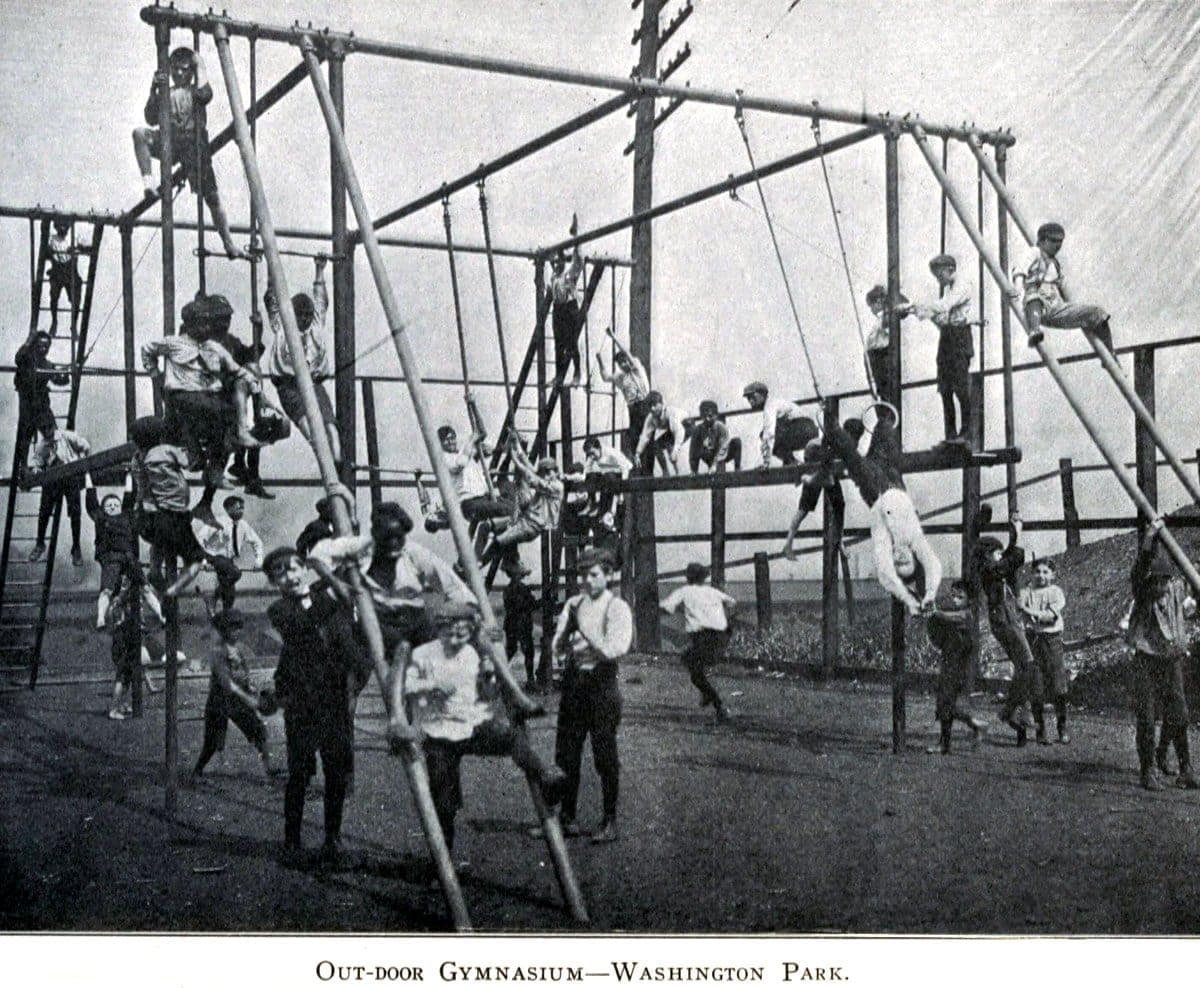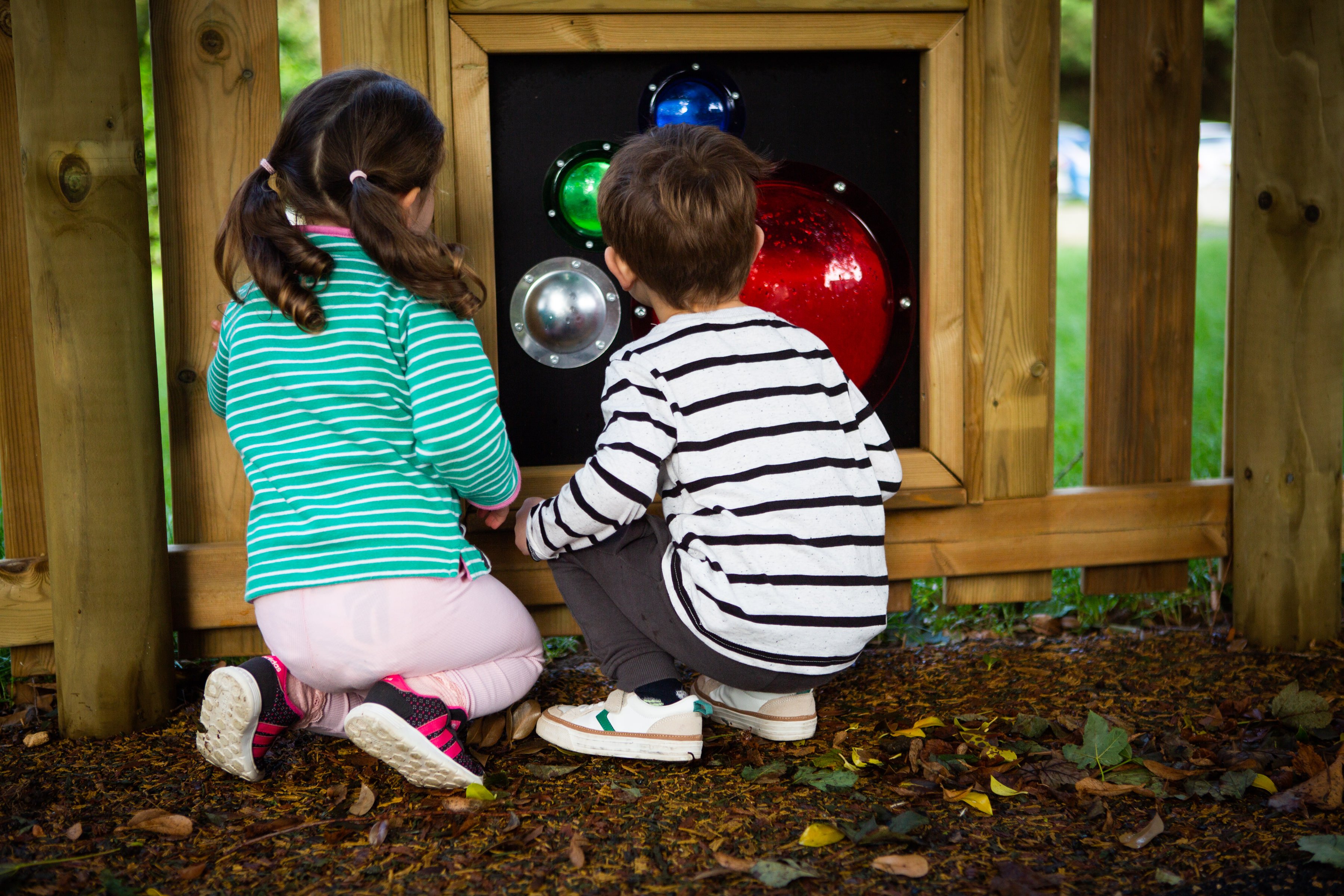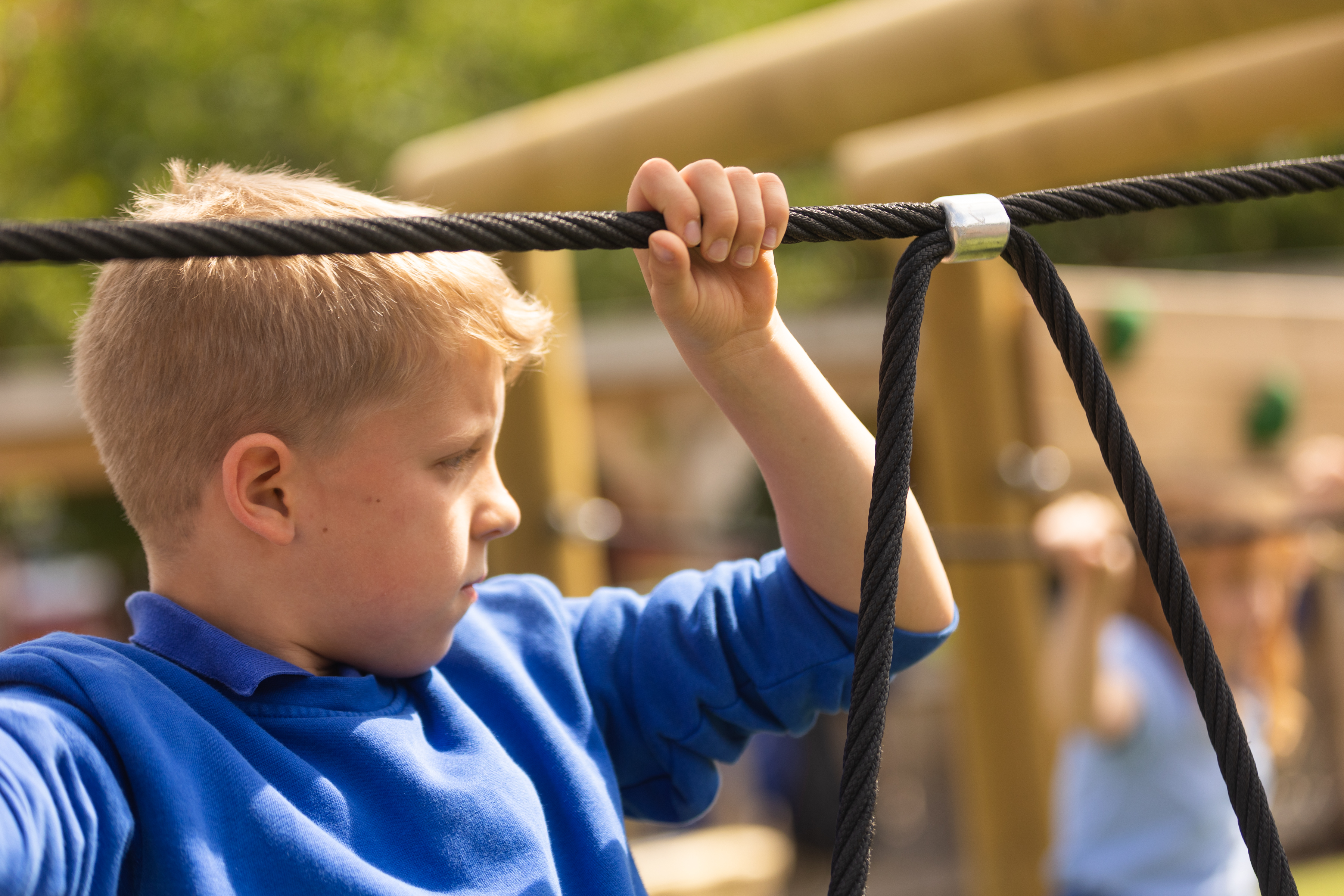The Evolution of Playgrounds
The roots of playgrounds can be traced back to the early 19th century, a time when the rise of industrialisation led to densely populated urban areas with limited green spaces. The playground movement emerged as a response to concerns about the living conditions of urban children and their lack of recreational opportunities. Early playgrounds, referred to as "sand gardens," were introduced in Germany during the mid-1800s, aiming to provide a safer haven for children to learn and play.
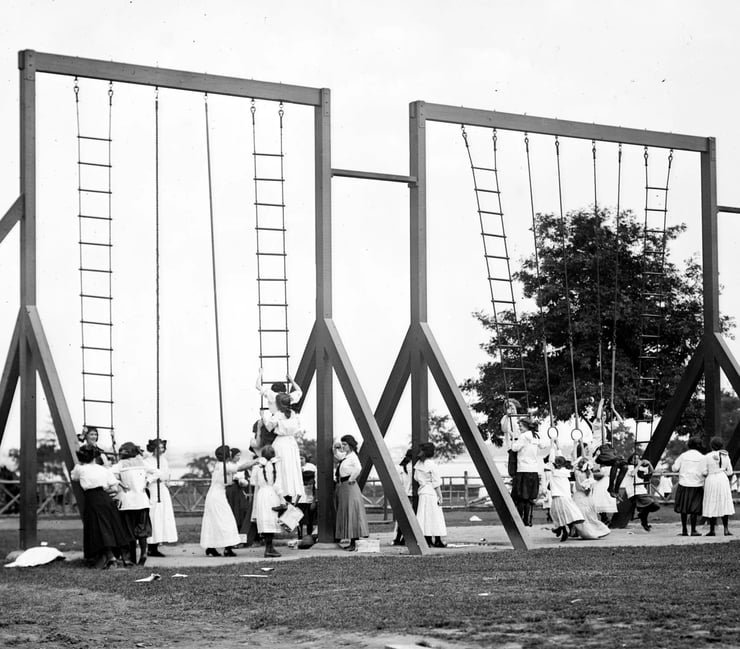
Playgrounds take off
In the United States, the inception of public school playgrounds occurred around the turn of the 20th century. Educational reformers and scholars recognised the significance of physical activity in child development and perceived playgrounds as a vehicle to promote health and social interaction among children. These initial playgrounds often consisted of basic setups, featuring open fields, swings, and play structures constructed from wood or metal.
The concept of playgrounds was first introduced in Germany, initially as a method to educate children on proper play. However, it wasn't until 1859 that the first dedicated children's playground was established in a park in Manchester.
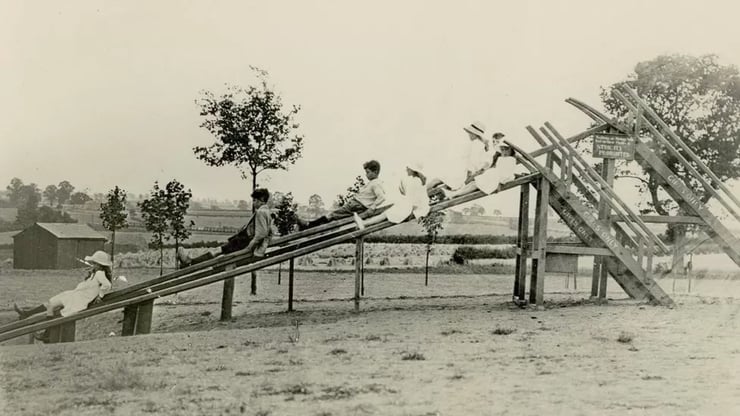
Playgrounds reach the UK
The notion of creating playgrounds for children spread to the United States, where the first playgrounds started appearing in Boston in 1886. These early playgrounds, by today's standards, were quite basic and wouldn't comply with modern health and safety regulations. When playgrounds first emerged, they often consisted of roughly constructed structures made from iron, with sharp edges that posed a significant risk if not used correctly.
During these early years, playgrounds did not gain widespread popularity. It wasn't until 1907 when US President Roosevelt made a concerted effort to introduce them, which sparked a new enthusiasm and propelled the concept further. Playgrounds came to be seen as a means to keep children away from busy city streets while facilitating their physical, mental, and social development through play.
Early playgrounds were often segregated by gender, featuring separate play areas for boys and girls. Children were closely supervised on the playground and instructed on the proper way to play.
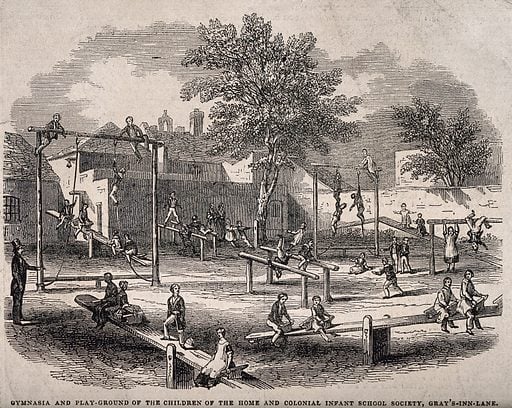
Make Do and Mend...
As the 20th century progressed, playgrounds continued to gain traction. The practice of segregating children by gender faded away, as did many of the regulations regarding supervision. It became evident that children benefited from unstructured play on their own terms, without constant adult intervention.
The Post-War Era saw the introduction of "junk playgrounds" in London. Conceived by landscape architect and children's rights advocate Lady Allen of Hurtwood in 1953, these playgrounds aimed to utilise recycled materials or "junk" to build innovative play areas. This idea, born out of the aftermath of extensive bombings during World War II, gained momentum and spread throughout the country, eventually leading to the establishment of the National Playing Fields Association, known today as Fields in Trust.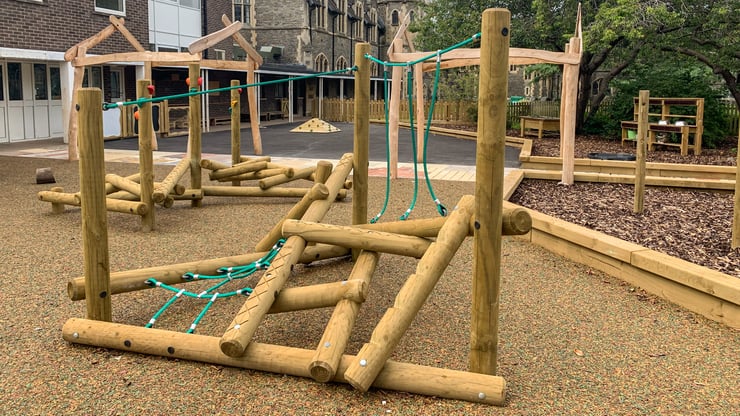
Adventure Playgrounds
In the mid-20th century, the concept of "adventure playgrounds" emerged as a new trend. These playgrounds embraced natural elements like sand, water, and rocks, fostering unstructured play that nurtured creativity and imagination. However, despite their innovation, these playgrounds often lacked adequate safety measures, resulting in an uptick in playground-related injuries.
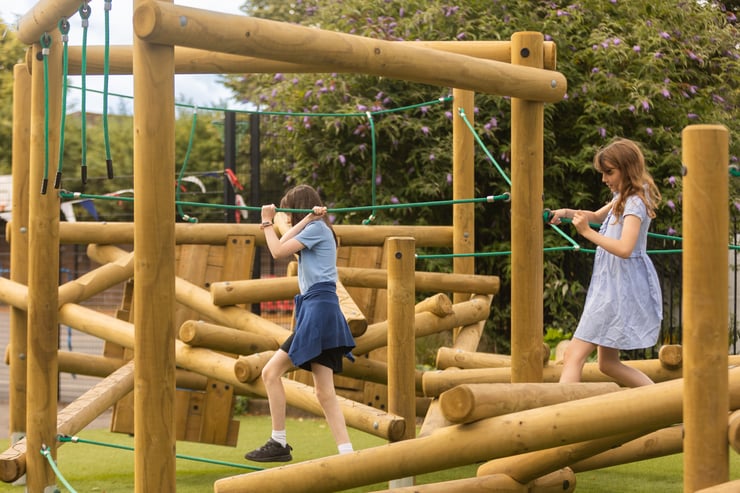
The need for Safety Surfacing
As opportunities for recreational play expanded, so did the number of playground-related injuries. The necessity for safer school playgrounds became evident, starting the development and implementation of safety surfacing.
Safety surfacing materials are easier to clean and maintain compared to natural surfaces like grass or soil. This ensures that the playground remains sanitary and free from potential health hazards.
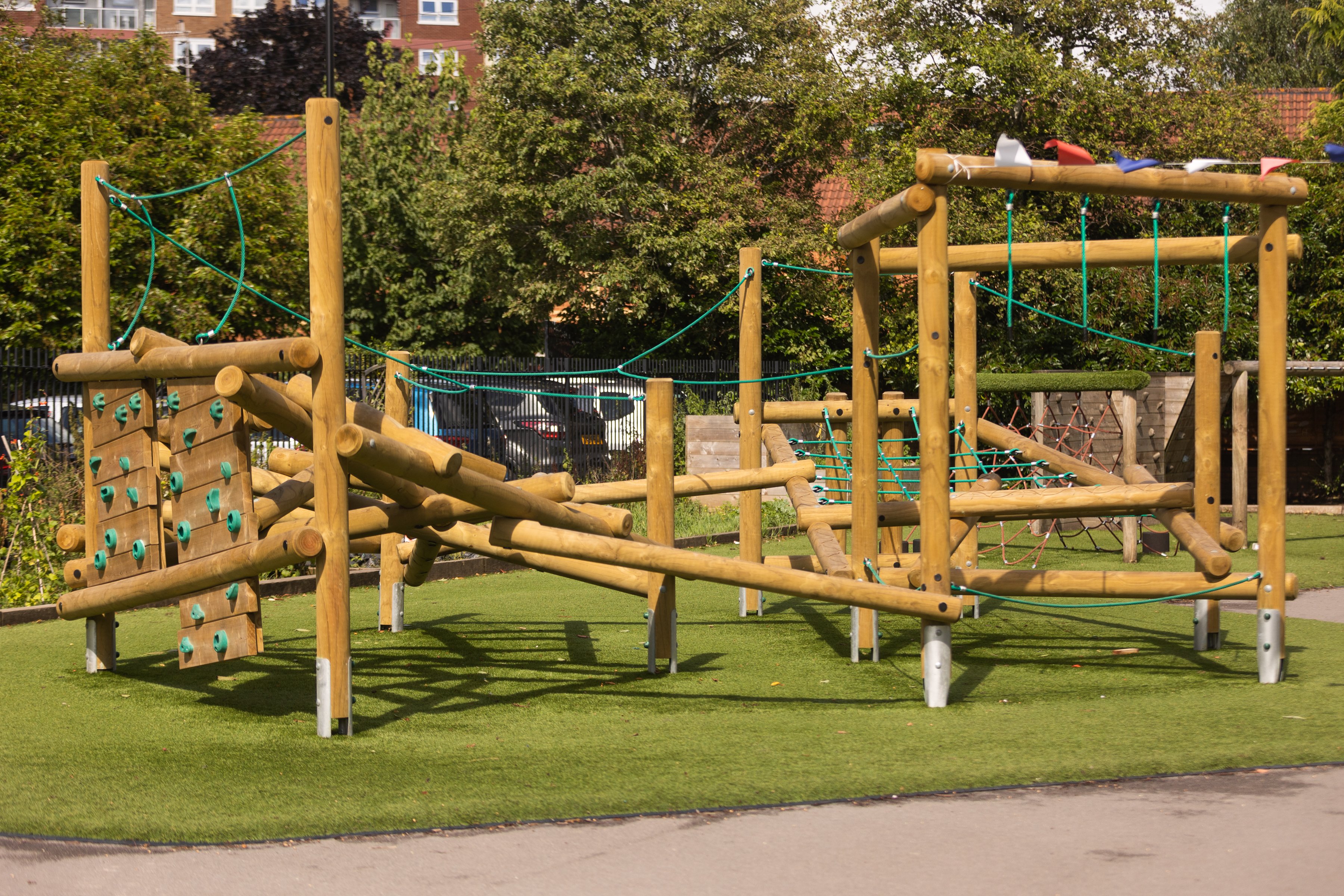
Conclusion
The evolutionary journey of school playgrounds underscores the ongoing commitment to providing children with safe and engaging spaces for play and enjoy social interaction. From the modest sand gardens to the modern, thoughtfully designed playgrounds of today, the transformation has been awe-inspiring.
The playground has been evolving for over a century and will undoubtedly continue to do so in the future. Our product design team are continually working on new designs so our play spaces are fun, challenging and engaging. What remains certain is that the joy and creative stimulation offered by playgrounds will continue to excite and engage children for generations to come-and we're here for it!
Originally published Aug 9, 2023 12:09:29 PM , updated January 31, 2024



